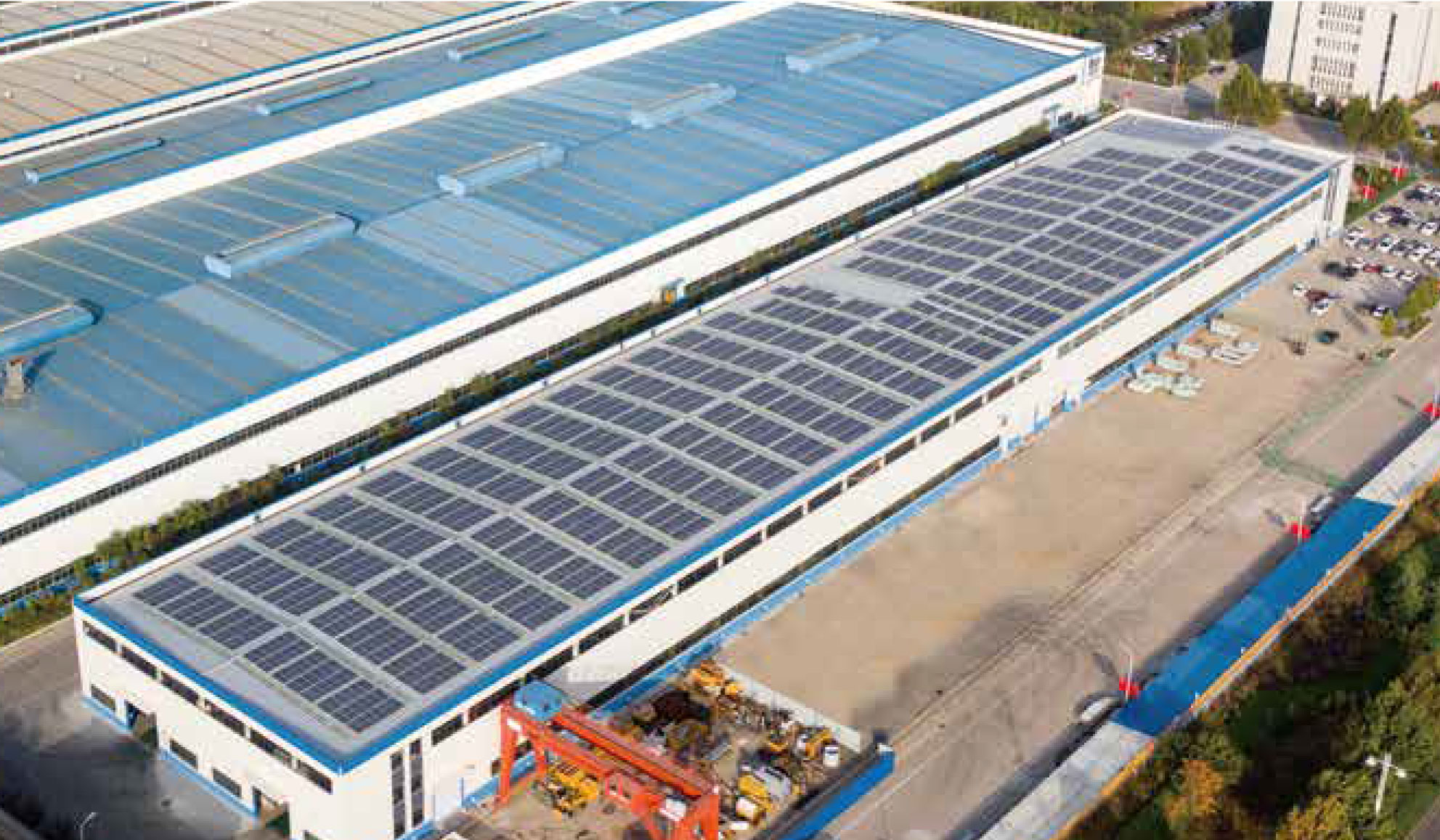In order to let you know more about solar photovoltaic power generation, we have summarized several frequently asked questions and explained them to you as follows:
1、冬天天冷時(shí)會(huì)不會(huì)電力不足?
1. Will there be a shortage of power in winter when it is cold?
解答:光伏系統(tǒng)的發(fā)電量的確受溫度的影響,直接影響發(fā)電量的因素是輻照強(qiáng)度和日照時(shí)長(zhǎng)以及太陽(yáng)能電池組建的工作溫度。冬天難免輻照強(qiáng)度會(huì)弱,日常時(shí)長(zhǎng)會(huì)短,一般發(fā)電量較夏天會(huì)少,這是很正常的現(xiàn)象。分布式光伏系統(tǒng)與電網(wǎng)相連,只要電網(wǎng)有電,家庭負(fù)載就不會(huì)出現(xiàn)電力不足和斷電的情況。
Answer: The power generation of the photovoltaic system is indeed affected by temperature. The factors that directly affect the power generation are the radiation intensity, sunshine duration and the working temperature of the solar cell assembly. It is inevitable that the radiation intensity will be weak in winter, the daily duration will be short, and the power generation will generally be less than in summer, which is a normal phenomenon. The distributed photovoltaic system is connected to the power grid. As long as the power grid is available, the household load will not suffer from power shortage and power failure.
2、光伏發(fā)電是否有輻射、污染?
2. Is there radiation and pollution in photovoltaic power generation?
解答:目前從運(yùn)行看,光伏發(fā)電是沒有輻射和污染的。但是會(huì)有電池和噪音問題。電子設(shè)備在運(yùn)行時(shí)會(huì)有噪音,但在可控范圍內(nèi)。電池類似手機(jī)、相機(jī)電池等有小劑量的輻射,但不會(huì)是大問題。”光伏發(fā)電電池板回收是否有輻射主要看其材料。如果是晶硅太陽(yáng)能電池回收沒有太多污染源,同樣,非晶硅光伏太陽(yáng)能產(chǎn)品,主要看選擇何種材料。“有些惰性材料要好些,毒性要小些。”
Answer: At present, from the perspective of operation, photovoltaic power generation is free from radiation and pollution. But there will be battery and noise problems. The electronic equipment will have noise during operation, but it is within the controllable range. Batteries like cell phones and camera batteries have a small dose of radiation, but it will not be a big problem. " Whether there is radiation from photovoltaic power generation panel recycling depends on its materials. If the recycling of crystalline silicon solar cells does not have too many pollution sources, similarly, amorphous silicon photovoltaic solar products mainly depend on the choice of materials. "Some inert materials are better and less toxic."
3、分布式光伏發(fā)電系統(tǒng)應(yīng)用范圍及安裝方式?
3. Application scope and installation mode of distributed photovoltaic power generation system?
解答:分布式光伏發(fā)電系統(tǒng)可安裝在任何有陽(yáng)光照射的地方,包括地面、建筑物的頂部、側(cè)立面、陽(yáng)臺(tái)等,其中在學(xué)校、醫(yī)院、商場(chǎng)、別墅、居民、廠房、企事業(yè)屋頂、車棚、公交站牌頂部應(yīng)用為廣泛;安裝方式有混凝土、彩鋼板以及瓦片式三個(gè)類型。
Answer: The distributed photovoltaic power generation system can be installed in any place with sunlight, including the ground, the top of buildings, side facades, balconies, etc. It is widely used in schools, hospitals, shopping malls, villas, residents, factories, roofs of enterprises and institutions, car sheds, and the top of bus stops; The installation methods include concrete, color steel plate and tile type.

4、安裝分布式光伏系統(tǒng)時(shí)應(yīng)如何考慮荷載對(duì)光伏方陣和建筑物的影響?
4. How to consider the impact of load on photovoltaic array and buildings when installing distributed photovoltaic system?
解答:從安全和穩(wěn)定的角度出發(fā),設(shè)計(jì)時(shí)需要考慮荷載、風(fēng)荷載、雪荷載、溫度荷載對(duì)光伏方陣和建筑物的影響,保證光伏組件。支架及方陣基礎(chǔ)有足夠的強(qiáng)度和剛度抵御當(dāng)?shù)貥O端氣候的侵害。分布式系統(tǒng)安裝之前,要對(duì)建筑物的荷載能力進(jìn)行勘測(cè)、計(jì)算和校核,在保證建筑物滿足載荷的前提下,設(shè)計(jì)出合理的安裝施工方案。
Answer: From the perspective of safety and stability, the impact of load, wind load, snow load and temperature load on the PV array and buildings should be considered in the design to ensure the PV modules. The support and array foundation have enough strength and stiffness to resist the local extreme weather. Before the installation of the distributed system, the load capacity of the building shall be surveyed, calculated and checked. On the premise of ensuring that the building meets the load, a reasonable installation construction scheme shall be designed.
5、分布式光伏發(fā)電補(bǔ)貼資金通過什么方式發(fā)放給業(yè)主?
5. How is the subsidy fund for distributed photovoltaic power generation distributed to owners?
解答:光伏發(fā)電項(xiàng)目可由電力用戶自建,也可采用合同能源管理方式。合同能源管理企業(yè)應(yīng)與電力用戶依據(jù)關(guān)于合同能源管理等規(guī)定,簽訂能源服務(wù)協(xié)議。用戶自建光伏系統(tǒng)的自用光伏電量不做交易,對(duì)于項(xiàng)目業(yè)主安裝在其他電力用戶屋面上的自用光伏電量,由項(xiàng)目業(yè)主與電力用戶按照合同能源管理協(xié)議進(jìn)行結(jié)算。對(duì)多余光伏上網(wǎng)電量,由電網(wǎng)企業(yè)負(fù)責(zé)計(jì)量、統(tǒng)計(jì)、光伏系統(tǒng)全部發(fā)電量均可得到電量定額補(bǔ)貼。電網(wǎng)企業(yè)依據(jù)光伏電量的計(jì)量數(shù)據(jù)按照規(guī)定的度電補(bǔ)貼標(biāo)準(zhǔn)按照結(jié)算周期轉(zhuǎn)撥補(bǔ)貼資金。
Answer: Photovoltaic power generation projects can be built by power users themselves, or energy contract management can be adopted. Energy contract management enterprises shall sign energy service agreements with power users in accordance with national regulations on energy contract management. The self used photovoltaic power of the user's self built photovoltaic system will not be traded. The self used photovoltaic power installed on the roof of other power users by the project owner will be settled by the project owner and the power users in accordance with the energy management contract agreement. For the surplus photovoltaic grid energy, the power grid enterprise is responsible for measuring and statistics, and all the power generated by the photovoltaic system can receive the national electricity quota subsidy. The power grid enterprises shall transfer the national subsidy fund according to the measurement data of photovoltaic power according to the national electricity subsidy standard and the settlement cycle.
太陽(yáng)能光伏發(fā)電系統(tǒng)的幾個(gè)常見問題就先從5個(gè)方面來講解了,您對(duì)此還有什么不懂的,歡迎來我們網(wǎng)站
http://www.51dwgw.cn進(jìn)行咨詢了解!
Several common problems of solar photovoltaic power generation system will be explained from five aspects. If you don't understand anything about this, please come to our website http://www.51dwgw.cn Ask about it!



 TEL:0531-82390078
TEL:0531-82390078 TEL:18805312017
TEL:18805312017 MAI:sdzdny001@163.com
MAI:sdzdny001@163.com 公司地址: 濟(jì)南市歷下區(qū)山大路157號(hào)
公司地址: 濟(jì)南市歷下區(qū)山大路157號(hào) 天合藍(lán)天·山東種電
天合藍(lán)天·山東種電 備案號(hào):魯ICP備17052940號(hào)-2
魯公網(wǎng)安備37010202700164號(hào)
備案號(hào):魯ICP備17052940號(hào)-2
魯公網(wǎng)安備37010202700164號(hào)
 網(wǎng)站地圖|XML|TXT
網(wǎng)站地圖|XML|TXT

